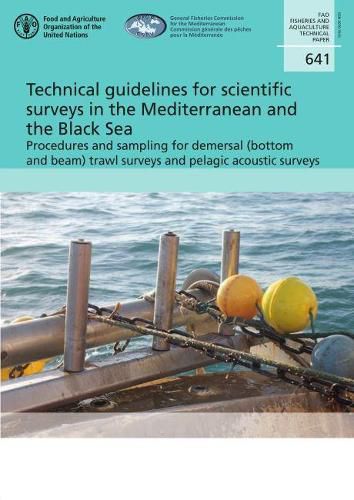Readings Newsletter
Become a Readings Member to make your shopping experience even easier.
Sign in or sign up for free!
You’re not far away from qualifying for FREE standard shipping within Australia
You’ve qualified for FREE standard shipping within Australia
The cart is loading…






This publication presents a methodology aimed at supporting the planning and implementation of regional demersal (bottom and beam) trawl and pelagic acoustic surveys. It can be useful for the implementation of new surveys-at-sea in areas where demersal trawl and pelagic acoustic surveys are not regularly carried out. In the Mediterranean and the Black Sea, the assessment of pelagic stocks is essentially based on acoustic surveys using acoustic techniques with mid-water trawling. These routine surveys-at-sea provide essential information, which are crucial to fine-tune the assessments of the status of resources. However, survey practices differ from one subregion to another, resulting in a lack of large-scale standardized surveys. According to the report, the methodology presented can tackle this issue by increasing comparability between existing surveys thanks to the standardization of methods, sampling of catches and data recording and analysis. Finally, it represents a valuable tool to define minimum requirements towards sustainability and management objectives at the regional and subregional level.
$9.00 standard shipping within Australia
FREE standard shipping within Australia for orders over $100.00
Express & International shipping calculated at checkout
This publication presents a methodology aimed at supporting the planning and implementation of regional demersal (bottom and beam) trawl and pelagic acoustic surveys. It can be useful for the implementation of new surveys-at-sea in areas where demersal trawl and pelagic acoustic surveys are not regularly carried out. In the Mediterranean and the Black Sea, the assessment of pelagic stocks is essentially based on acoustic surveys using acoustic techniques with mid-water trawling. These routine surveys-at-sea provide essential information, which are crucial to fine-tune the assessments of the status of resources. However, survey practices differ from one subregion to another, resulting in a lack of large-scale standardized surveys. According to the report, the methodology presented can tackle this issue by increasing comparability between existing surveys thanks to the standardization of methods, sampling of catches and data recording and analysis. Finally, it represents a valuable tool to define minimum requirements towards sustainability and management objectives at the regional and subregional level.